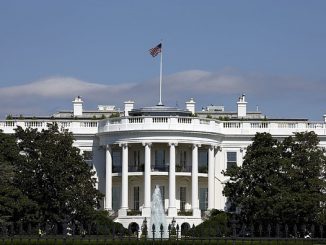
In a surprising turn of events, the idea of a United States sovereign wealth fund has emerged as a topic of discussion among political and financial heavyweights. According to Bloomberg, hedge fund billionaire John Paulson has proposed an ambitious plan for the US to establish a sovereign wealth fund that could potentially surpass Norway’s $1.7 trillion behemoth.
The concept gained further traction when former President Donald Trump, during a speech at the Economic Club of New York, vowed to initiate such a fund using proceeds from trade tariffs. “Why don’t we have a wealth fund? Other countries have wealth funds. We have nothing,” Trump stated, as reported by Bloomberg. “We’re going to have a sovereign wealth fund, or we can name it something different.”
Paulson, who has been advising Trump on this idea, expressed his enthusiasm in a Bloomberg Television interview. “It would be great to see America join this party and instead of having debt, have savings,” he said. Paulson envisions a fund that would, “over time, be larger than any of the existing funds.”
The concept of sovereign wealth funds is not new on the global stage. Countries with significant commodity exports and budget surpluses, such as Saudi Arabia with its $760 billion Public Investment Fund and Singapore’s GIC (estimated at $847 billion), have long utilized these financial instruments. These funds have become influential players in global markets, particularly in private equity, venture capital, and infrastructure investments.
However, the United States faces unique challenges in establishing such a fund. Bloomberg notes that the country has been grappling with trillion-dollar deficits for years, financing government spending through debt issuance. This fiscal reality raises significant questions about the feasibility of creating and funding a sovereign wealth fund.
Trump’s proposal, while bold, would face substantial hurdles. Bloomberg reports that his tax cut proposals are already estimated to cost up to $10.5 trillion over a decade. The growing concern among policymakers, investors, and ratings agencies about the US budget deficit adds another layer of complexity to the proposition.
Paulson, however, remains optimistic. He suggested to Bloomberg that gaps could be closed through tariffs and cutting unnecessary spending. “You have to start somewhere,” Paulson stated. “That’s a good model to follow.”
The idea of a US sovereign wealth fund represents a dramatic shift in fiscal thinking for a nation accustomed to deficit spending. While the concept is intriguing, the path from proposal to reality remains unclear and fraught with challenges.
As the discussion evolves, it will undoubtedly spark debate about US fiscal policy, the role of government in wealth creation, and the country’s position in the global financial landscape.
Whether this ambitious vision can overcome the practical hurdles of implementation remains to be seen, but it has certainly ignited a conversation about the future of America’s financial strategy on the world stage.
- Bulenox: Get 45% to 91% OFF ... Use Discount Code: UNO
- Risk Our Money Not Yours | Get 50% to 90% OFF ... Use Discount Code: MMBVBKSM
Disclaimer: This page contains affiliate links. If you choose to make a purchase after clicking a link, we may receive a commission at no additional cost to you. Thank you for your support!



Leave a Reply